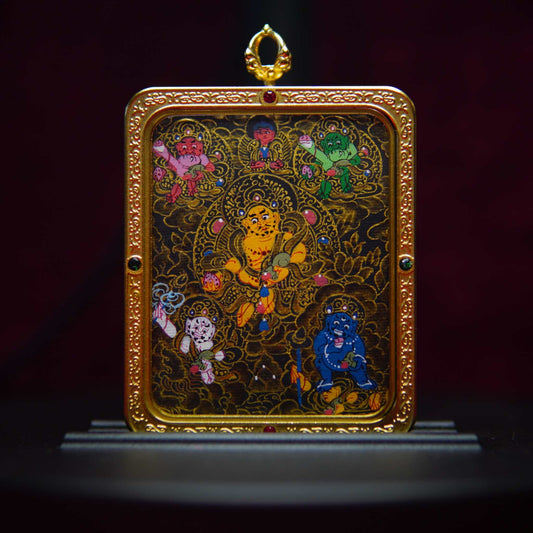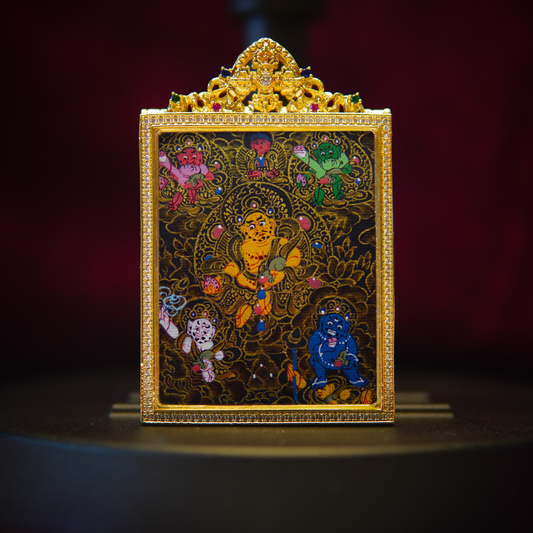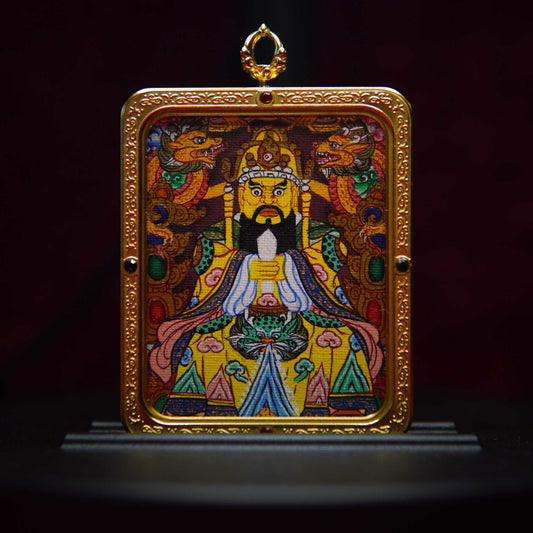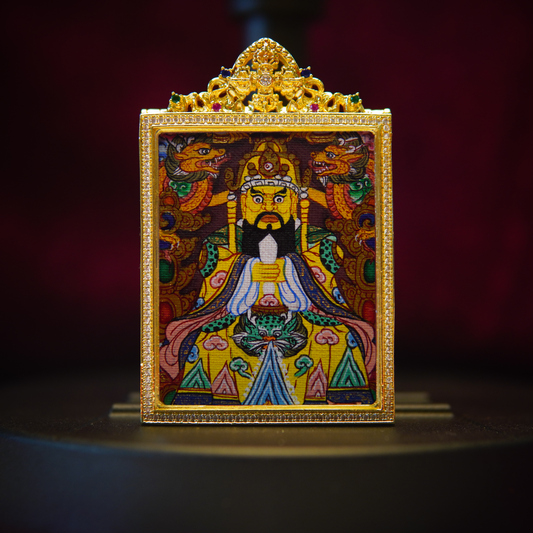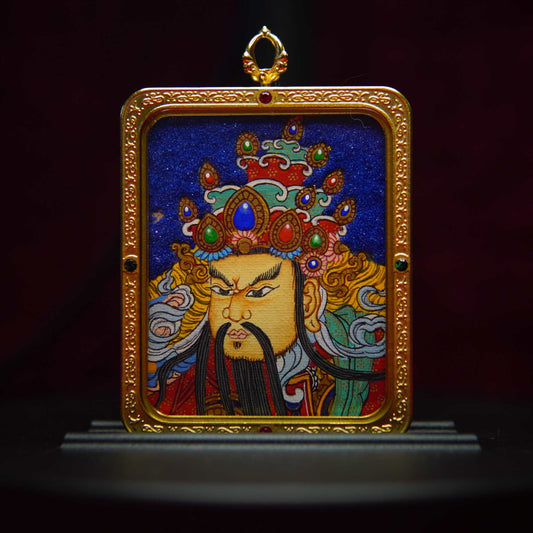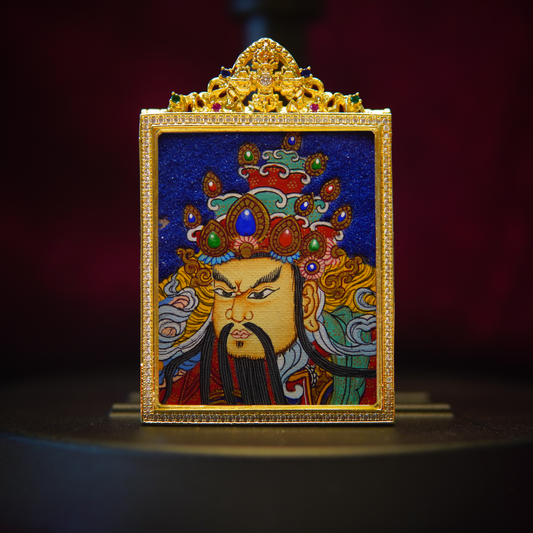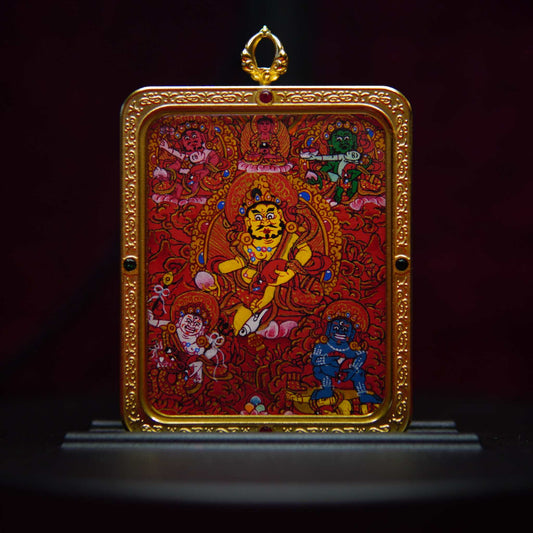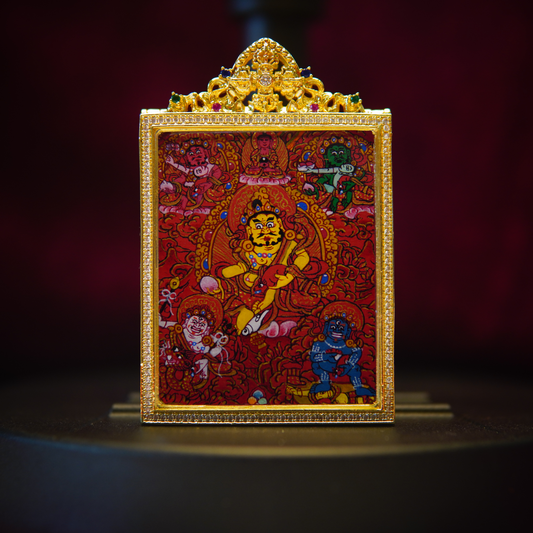What Is the Meaning of Manjushri Thangka in Buddhism?
Tapita- What Is the Meaning of Manjushri Thangka in Buddhism?
- 🟠 Who Is Manjushri?
- 🖼️ What Does the Manjushri Thangka Depict?
- 🔥 The Flaming Sword (Right Hand)
- 🌸 The Lotus with a Scripture (Left Hand)
- 💛 Youthful Appearance
- 🧘♀️ Why Practitioners Meditate on Manjushri
- 📿 Modern Devotion: Wearing Manjushri as a Pendant
- ✨ Final Thought
n Tibetan monasteries, ancient caves, and modern homes of Buddhist practitioners, one image stands out with striking clarity: a radiant being holding a flaming sword in one hand and a lotus flower in the other.
This is Manjushri, the Bodhisattva of Wisdom—and his Thangka is more than beautiful art.
It’s a portal into higher understanding.
But what does the Manjushri Thangka really mean?
Why is it revered by monks, teachers, and spiritual seekers across centuries?
Let’s explore the wisdom behind the image.
Manjushri (Sanskrit: Mañjuśrī; Tibetan: Jampelyang) is one of the most important bodhisattvas in Mahayana and Vajrayana Buddhism. He is the embodiment of transcendent wisdom—the insight that sees beyond illusion, cuts through ignorance, and reveals the truth of all things.
He’s not just "smart." He represents the kind of wisdom that frees the mind.
In Buddhist tradition, no enlightenment is possible without wisdom, and Manjushri is its personification.
🖼️ What Does the Manjushri Thangka Depict?
In a traditional Thangka painting, Manjushri is often shown seated on a lotus throne, surrounded by glowing light and serenity. Each element has meaning:
🔥 The Flaming Sword (Right Hand)
This isn't a weapon of violence. It’s the sword of discriminating wisdom, said to cut through the darkness of:
-
Delusion
-
Ignorance
-
Attachment
-
Ego

The fire symbolizes illumination—burning away false views.
🌸 The Lotus with a Scripture (Left Hand)
Held in his left hand is a blooming lotus, on which rests the Prajnaparamita Sutra, the “Perfection of Wisdom” text. This represents:
- Pure, untouchable insight
- The Buddhist teachings on emptiness (śūnyatā)
- Wisdom that arises from deep meditation and understanding
💛 Youthful Appearance
Manjushri is usually shown as a youth or young man, symbolizing that true wisdom is fresh, alive, and beyond age.
🧘♀️ Why Practitioners Meditate on Manjushri
Many monks and lay practitioners meditate on Manjushri to:
-
Sharpen their mind and memory
-
Clarify understanding of scriptures
-
Remove mental fog, doubt, or confusion
-
Cultivate wisdom before teaching or learning
In Tibetan Buddhism, it's common to chant Manjushri's mantra:
"Om Ah Ra Pa Tsa Na Dhih"
Each syllable is said to unlock specific qualities of wisdom.
📿 Modern Devotion: Wearing Manjushri as a Pendant
At Zendo Thangka, we honor the living energy of Manjushri through hand-painted Thangka pendants, allowing you to carry his wisdom close to your heart.
Whether you’re a student, meditator, spiritual seeker, or simply drawn to clarity in a noisy world—Manjushri is a powerful guide.
Each pendant may include:
- Hand-painted miniature Thangka artwork
- Blessing scrolls with his mantra inside
- A symbol of clarity, focus, and inner sharpness
✨ Final Thought
The Manjushri Thangka isn’t just a picture of a deity holding a sword.
It’s a living map—a reminder that real freedom comes from understanding.
In a time of endless opinions and surface noise, Manjushri’s quiet, fearless clarity cuts through the fog.
“Wisdom is not knowing more—it’s seeing what is.”

